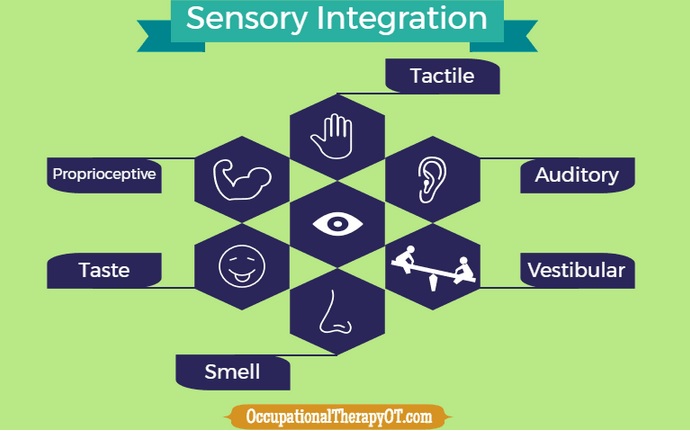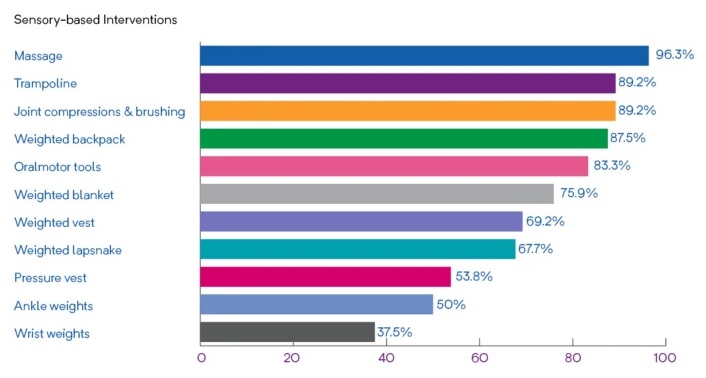What Is Sensory Integration Therapy For Students With Special Educational Needs?
30th October 2023
Sensory processing dysfunction (SPD) has been identified as an autistic trait. However, in 2013, it became an official part of the diagnosis described as hypo or hyperreactivity to sensory inputs or being indifferent to sensory aspects of the environment.
Children having SPD can have quite a miserable life as it interferes with the ordinary activities of daily life. They can also completely shut themselves off or disengage from the surroundings in case they come in contact with extreme sensory overreactions. To get rid of such sensory dysfunction issues, one of the most common strategies is Sensory Integration Therapy which lowers the reactivity in children and improves their ability to participate in numerous activities.
What Is Sensory Integration Therapy?
Sensory Integration Therapy was first introduced by A. Jean Ayres, an occupational therapist back in the 1970s. It refers to the integration, organization, and processing of sensory information from the body and the environment.

Source: occupationaltherapyot.com
Sensory information is received by a child through the following senses:
- Vision
- Tactile
- Auditory
- Olfactory
- Gustatory
- Vestibular
- Proprioception
- Interoception
It was created to help children struggling with sensory processing problems to help them improve. Treatment sessions are normally play-oriented and include tools like slides, swings, and trampolines. Various manual techniques are also used such as brushing, weighted bests, deep pressure, and swinging.
These treatments are meant to calm an anxious child. Other benefits include increasing a child's threshold for tolerating sensory-rich environments, improving positive behavior, and making transitions less disturbing.
The Different Types Of Sensory Integration Challenge
Sensory integration challenges can be grouped into two main categories:
1. Sensory Modulation Dysfunction
This refers to the brains ability to tune and filter sensory information that makes sense and is required for participation in a task. The subtypes include over-responsivity and under-responsivity.
Over-responsivity is when people have heightened reactions to sensory inputs. This includes being sensitive to touch, reaching strongly to sudden and loud noises, being picky about certain foods based on their colors, textures, temperatures, etc, and finding activities such as hair cutting and hair cutting uncomfortable.
Under-responsivity is when individuals have a reduced reaction to sensory inputs. This includes, not feeling pain, fidgeting, running around or rocking, frequently chewing objects, or showing poor attention to their surroundings.
Hey, do you follow us on Social Media? We regularly share upgraded educational content, tips, feedback and more. Check us out by clicking the profiles here - Facebook / Twitter / LinkedIn / Pinterest / Instagram / YouTube
2. Dyspraxia
This refers to the difficulties that students have with motor planning and execution. This can affect their ability to perform coordinated movements. Some students might experience numerous categories of sensory integration differences. The subtypes of Dyspraxia include Vestibular Bilateral Integration and Sequencing (VBIS) and Somatodyspraxia.
People with VBIS experience challenges in processing proprioceptive and vestibular sensations, this affects their ability to control balance, body extension, sequencing of movements, motor planning, and bilateral integration. Children with this condition can appear clumsy, struggle with coordination actions that require spatial accuracy and efficient timing, and have difficulty in completing tasks that involve the integration of movement and vision.
Somatodyspraxia refers to difficulties in coordinating and executing new motor tasks rather than habitual ones. It involves vestibular, proprioceptive, and poor tactile processing. People with this condition also have the same symptoms as VBIS along with some additional challenges. This includes facing trouble in planning and sequencing movements, getting dressed, poor gross motor skills, and having low self-esteem.
Aim Of Sensory Integration Therapy

Source: link.springer.com
The main aim of sensory integration therapy includes:
- Helping children who have perception problems and resolving mixed stimulation
- Creating a physical environment that encourages children to depend on their senses
- Determining how their specific sensory stimulation affects overall social, human, and physical development
- Motivating students to activities to learn to develop their senses and explore the environment
- Improving body positions, vestibular functions, and motor capabilities
Signs A Child May Be Struggling With Sensory Stimulation
Some ways to identify that a child is struggling with sensory stimulation are as follows:
- Difficulty in sitting or standing
- Feeling excessively hot or cold
- Super low or super high activity levels
- Inappropriate physical responses
- Inadequate physical coordination
- Little or no reaction to external events
- Over or under-sensitivity
- Low self-esteem
- Restlessness
- Behavioral issues
- Speech delays
- Reclusiveness
- Strong reactions to food, textures, and sound
Benefits Of Sensory Integration Therapy
Some of the benefits of sensory integration therapy include:
- Students can understand actions and outcomes
- They can understand sensory input correctly
- They can create a sense of surrounding space and physical equilibrium
- Students learn to create positive behavior patterns
- The therapy removes fear, encourages socialization and play
- It minimizes sensory defensiveness and input tolerance
- It improves sleep cycles, language development, attention, and confidence
- The therapy also regulates frustration and emotional outbursts
Include Sensory Integration Therapy To Create Better Learning Environments
Sensory integration therapy must only be carried out by a qualified practitioner, physiotherapist, language and speech specialist, or occupational therapist. Also, individuals who have undertaken some sort of rigorous training in sensory integration are eligible. Thus, while dealing with such students it is always advised to have completed some sort of special education courses for teachers so that you can identify such students and refer them for further diagnosis to a practitioner. Even though you are not aware, small adjustments in your teaching schedule can make huge differences in how they manage their day-to-day life.
We believe education should be accessible for everyone. That’s why we don’t charge for our blogs. Find the right course that will help you in your career with us, contact us at - 1800 - 212 - 6400. You can mail us at act@asiancollegeofteachers.com.
Written By : Sanjana
Leave a Reply

